My dear pottery figures
|
You will be surprised to know that a hundred years ago the famous Karatsu
pottery was quite different from what it is now. The present Karatsu Pottery
is mainly for tea ceremony. Tea bowls, tea containers, water containers,
etc.
But these were revised items at the beginning of Showa era.
Before that, in Karatsu, big and small jars to contain water, or else,
in the kitchen or in the garden. Figures were made much for the decoration
of gardens, house alcoves and shellves.
The motifs of the figures were Dahrmas, lions, tigers, or other items of
religions or common interest.
In Yoyokaku, we have many of these 100 year-old figures. Some were partly
broken, some are quite healthy.
This month, I suddenly thought I must decorate these things again. I took
them out from our storage, dusted them, and put them here and there.
They look happy now, and I feel happy too. These figures are surely out
of fashion, but sometimes 'time' is more valuable than 'fashion'. They
make our guests smile.
So, please enjoy meeting my dear figures.
|
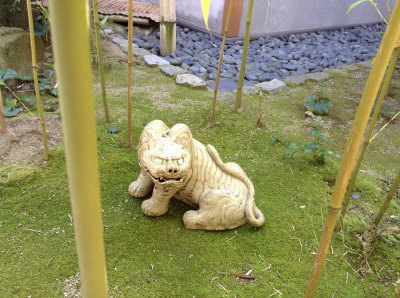 |
One night, a tiger appeared in my dream.
He roared and said to me.
"Why do you imprison me inside the warehouse for such a long time?
Don't you know that a tiger is a King of bamboo forest?
(In Orient, tigers were often painted with bamboo trees.)
"You should release me right away!"
That is why I put him in our bamboo forest, if I can call it a forest.
To my surprise, on the next day, heavy snow fell for two days and night,
which is quite rare in this warm town in Kyushu.
You will see the picture of my Snow Tiger above,
Was he happy there? I have no idea.
Anyway, my tiger will sit among the bamboo trees ever after. |
Dahrma sat for nine years for meditation, and it is said that he lost his
legs because of this.
Our Dahrma sits on a stone too. He looks cold. |
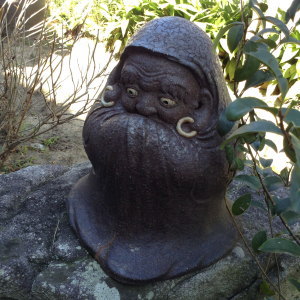 |
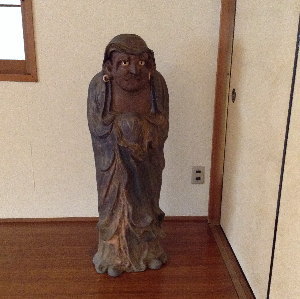 |
Another Dahrma stands in our banquet room.
Standing figures of dahma are not common.
This is a big figure, and I can not move it alone.
|
Here is another Dahrma.
He sits.
I made him a cushion.
Hope his legs do not hurt him. |
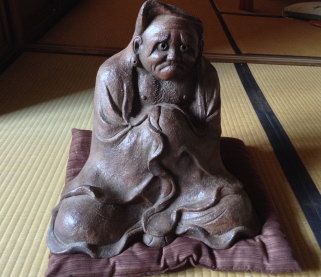 |
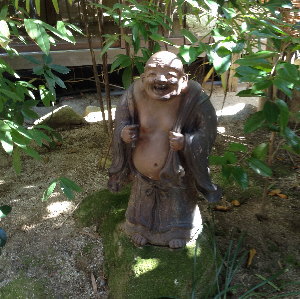 |
This is not Dahrma.
He is Budai.
He is a Chinese zen monk in 10th century.
In Japan, he is one of the seven gods who make people happy.
|
This is a lion.
Oriental people express a lion in this figure.
This pottery figure was made by a famouse potter, Tenyu Nakazato( Tarouemon
Nakazato the 11th).
I remember that one day (the late) Tarouemon Nakazato the 13th came and
saw this figure. He was happy to find his grandfather's art in Yoyokaku.
He told us to put this lion indoors, but it seems that if we move this
figure it might be broken in pieces.
So this lion is still out in the garden. |
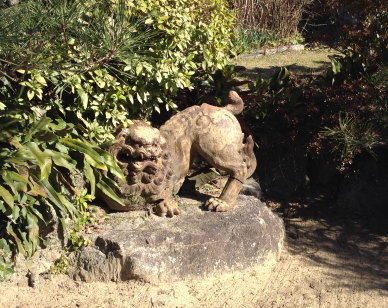 |
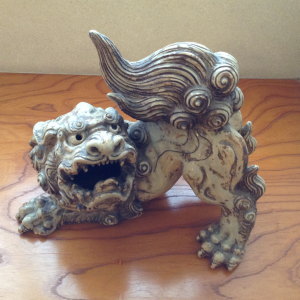 |
Another lion.
Lions and piony flowers are often used as a motif of a painting, or a theme
of dancing or Noh play.
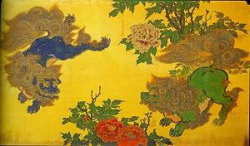
|
One more small lion with a ball.
Is he a soccer player?
No, this ball means a treasure, and the lion is a guardian of the treasure.This
motif often appears in Oriental art.
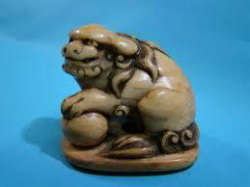 |
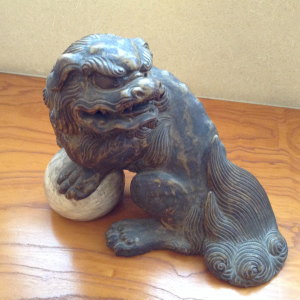 |
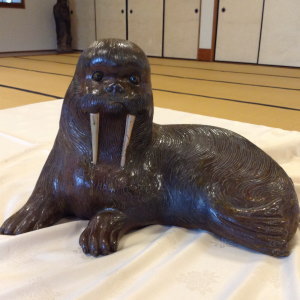 |
My favorite figure. But I do not know what it is.
A seal? Sea lion? Fur seal? Walrus?
The fangs tell this is a walrus. Right?
His eyes and nose makes us smile. How cute!
I do not know why this potter made this figure.
100 years ago, Japanese people might have few chances to see this animal.
Especially in Karatsu!
Did he really see one? Or, did he see a photo? Or a sketch?
|
Kanzan and Jyuttoku are famouse hermitts and poets in China in 9th
century.
They often apper in paintings, figures, or literatures.
|
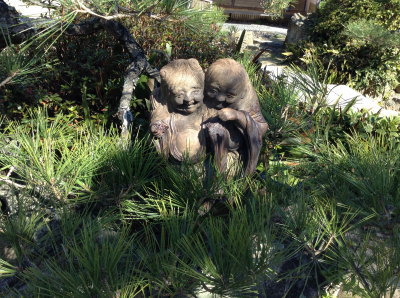 |
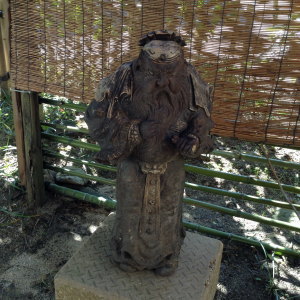 |
Mencius
This pottery statue was long forgotten in our storage.
I found this and washed clean.
|
Sugawara-no-Michizane
Sugawara-no-Michizane was worshipped now as a god of study.
Students and parents go to Dazaifu Tenmangu, the shrine of Michizane, in
Dazaifu City of Fukuoka Prefecture to pray for a success in the examinations. |
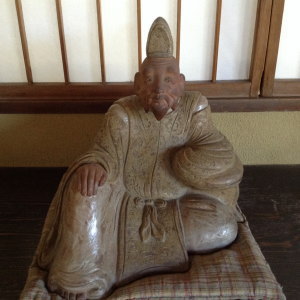 |
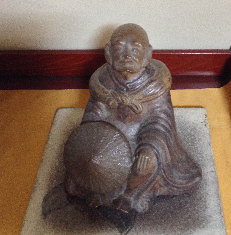 |
This is Saigyo Hosi.
This priest-poet has been much adored by Japanese people because of his
life and his poems.
Saigyo loved cherry blossoms more than anything else.
He wished to die under a cherry tree in full bloom on the full moon night
of March, which came true. |
This is another happy god Daikokuten.
Originally Daikokuten was a Hindu god, but unified with a Japanese character,
he became one of the seven happy gods. He especially controlls human wealth.
White mice are the symbols of the abundant warehouse.
If some one is called 'white mouse', the word means this person works hard
and brings wealth to his household. |
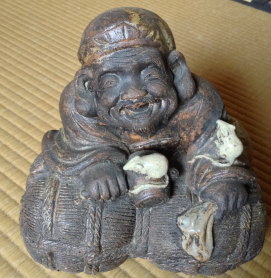 |
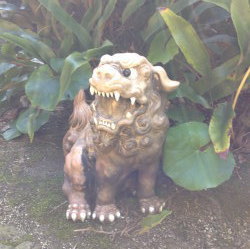 |
This is not a lion. It is Komainu.
You will see a pair of Komainus at the gate of shrines.
My Komainu has lost its partner. I serched for the partner in our storage,
but could not find. It was broken probably.
But someday I may be able to find a Komainu like this one. Then he will
be happy with the new partner. |
| |
|
Thank you for meeting my dear ones. They are much older than I. But for
me, these figures are my dear babies.
Please come to Yoyokaku, and look for them one by one.
|
|
|